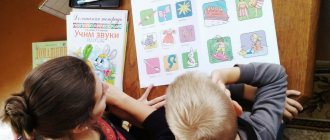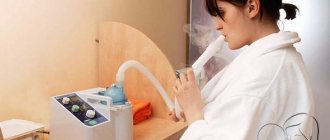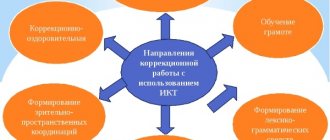Article:
Rhinolalia is a distortion of sound pronunciation and voice timbre due to a violation of the velopharyngeal closure.
Open rhinolalia is characterized by the presence of a constant open communication between the nasal and oral cavities, which causes the free passage of an air stream simultaneously through the nose and mouth during speech and the occurrence of nasal resonance during phonation.
Closed rhinolalia is associated with the presence of an obstruction blocking the exit of the air stream through the nose. Depending on the level of location of the anatomical obstacle (nasal cavity or nasopharynx), closed anterior and closed posterior rhinolalia are distinguished, respectively.
How to conduct a speech therapy examination of speech for rhinolalia?
During a speech therapy examination of a child with rhinolalia, Gutsmann's tests can be used to identify a hidden (submucosal) cleft.
1. Gutsmann's tests: First, we ask the child to alternately pronounce the vowels A and I, while we either close or open the nasal passages. With an open form, there is a significant difference in the sound of these vowels: with a pinched nose, sounds, especially I, are muffled and at the same time the speech therapist’s fingers feel a strong vibration on the wings of the nose.
2. Examination using a phonendoscope . The speech therapist inserts one olive into his ear, the other into the child’s nose. When pronouncing vowels, especially [U] and [I], a strong hum is heard - this is an indicator of a hidden submucosal cleft.
Where to treat rhinolalia to be sure of the result
The NeuroSpectrum Center for Pediatric Speech Neurology and Rehabilitation is a modern medical center that treats patients with impaired or absent speech, mental development disorders, developmental delays, and so on. Patients diagnosed with Rhinolalia
This is also not uncommon here, and the center knows exactly how to make a correct diagnosis and what treatment will be most effective.
The specialists of our Center have extensive experience working with patients with rhinolalia; they have modern diagnostic and medical equipment at their disposal, so we are ready to solve problems of any level of complexity. However, it must be remembered that at an earlier stage of rhinolalia, treatment will be less expensive and more effective, so you should not delay contacting specialists.
I. Inspection of the articulatory apparatus.
A speech therapy examination for rhinolalia begins with an examination of the articulatory apparatus. From documents, conversations, and examination, the type of cleft .
The age and type of operation are revealed, and the condition of the articulation organs is described in detail.
With a cleft of the upper lip, its mobility, the severity of cicatricial changes, and the condition of the frenulum are noted.
The palate before surgery is described:
- type of cleft,
- defect size,
- mobility of segments of the soft palate.
The palate after the operation is described as follows: the shape of the vault, scars, the degree of their severity, the length and mobility of the velum.
The palate is normal - at rest, a small tongue is 1-7 mm from the back wall of the pharynx, hanging from the plane of the chewing surfaces of the upper teeth by about 1 mm.
The mobility of the velum palatine is checked with a smooth, drawn-out pronunciation of [A], with the mouth wide open.
The density of the velopharyngeal closure and the activity of the lateral walls of the pharynx during phonation are noted.
When pronouncing vowels, immobility of the soft palate can be detected.
The speech therapist causes a pharyngeal reflex by touching the back and side walls of the pharynx with a spatula. If the functions of the soft palate are not impaired, then an involuntary upward jerk of the velum should occur.
The pharyngeal reflex is assessed: absent, intact, increased or decreased.
The attenuation of the reaction of the pharyngeal muscles can begin at 5 and end at 7 years. Its evaluation is necessary for children who will wear a functional pharyngeal obturator.
Language examination
The condition of the root and tip of the tongue is examined, a shift in the oral cavity, excessive tension, lethargy, and limited mobility are noted.
The child performs the following exercises:
- needle,
- snake,
- spatula,
- horse,
- watch,
- swing,
- delicious brew.
All exercises are carried out by imitation, then according to instructions in front of a mirror and without it.
Dental examination
Condition of bite, dentition.
The presence of an orthodontic apparatus, the purpose of application, the density of fixation, and whether or not it interferes with phonation are recorded.
At the end of the examination, the direction of the upper lip is checked.
Exercises:
- focus,
- spit
- blowing a light object into a target.
Blow with your tongue hanging out, with the wings of your nose closed and open.
Comprehensive examination of children with rhinolalia
Chapter 3. Comprehensive examination of children with rhinolalia
To understand the specific features of the structure of a speech defect and the correct organization of complex correctional work, it is necessary to conduct a detailed comprehensive study of the clinical, psychological and pedagogical data of a child with a cleft palate.
Many researchers point to the importance of a comprehensive study of children with anatomical defects of the palate (Chirkina G.V., Volosovets T.V., etc.). It is possible to identify the structure of the defect and make the correct diagnosis only with the close cooperation of maxillofacial surgeons, orthodontists, dentists, pediatricians, speech therapists, psychologists, neurologists, and psychiatrists.
Various research methods are used: study of medical and pedagogical documentation, pedagogical observation of children in conditions of free communication and in special classes, conversations with doctors, parents, children, objective research methods, radiography, etc.
In the process of identifying and subsequently overcoming any speech disorder, it is necessary to adhere to the fundamental principles of speech therapy. When examining children with congenital clefts of the upper lip and palate, the most relevant are the following: the principle of complexity, the principle of a systematic approach, the principle of an individual approach, the principle of taking into account the leading activities of age.
Medical-psychological-pedagogical diagnostics includes the study of medical history, speech therapy and psychological-pedagogical status. The study of the child begins with a conversation with the parents and the study of medical and psychological-pedagogical documentation.
Collection of anamnestic data and study of documentation.
Heredity is noted; features of the course of the prenatal, natal, postnatal periods; type and type of cleft; timing of surgical intervention; velopharyngeal closure; anomalies in the structure and dysfunction of the organs of articulation; vocal and respiratory functions; general somatic condition; early physical and speech development; state of motor function: general motor skills, fine motor skills of the fingers, articulatory motor skills; state of physical hearing; state of intelligence; the role of social factors, microsocial environment; length of hospital stay; defects in education; did you work with a speech therapist, where, for how long, is there any positive dynamics; expert opinions.
Speech therapy examination.
A speech therapist must be able to determine which components of the speech system are affected, what is the severity of the disorder, what is primary in the structure of the defect, and what is secondary. The successful solution of the problems of correctional training largely depends on how correctly and timely the speech disorder was identified, on the degree of its severity and the start of correctional classes. Speech therapy examination includes the following: examination of the state of the articulatory apparatus (structure and function), identification of pathological activity of the facial and facial muscles, examination of the state of respiratory function, state of voice function, examination of sound pronunciation, prosodic aspect of speech, state of phonemic perception and ability to phonemic analysis (sound- syllabic and sound-letter analysis), examination of the lexico-grammatical structure of speech, syllabic structure of words, development of word formation skills, examination of the state of monologue speech.
Respiratory examination scheme for children
with open organic rhinolalia
— type of physiological breathing (upper clavicular, clavicular-thoracic, diaphragmatic-costal);
— breathing rate (rapid, normal);
— breathing rhythm (arrhythmic, normal);
— nasal breathing (normal, difficult, absent);
— oral exhalation (formed/not formed);
— directed air stream (formed/not formed);
- speech breathing (exhalation during phonation): nasal, oral, mixed;
- depth, duration and direction of speech exhalation (oral exhalation during phonation).
Scheme for examining voice quality in children
with open organic rhinolalia
- voice strength (excessively loud, quiet, weak, exhausted)
— voice pitch (the ability to change the pitch of the voice, the possibility of voice modulation): modulated, unmodulated;
- voice timbre (degree of nasalization - hypernasalization, strong, moderate, absent; brightness, sonority, dullness of the voice, presence of hoarseness or hoarseness of the voice, intensity of phonation).
Features of the voice function are revealed during examination and conversation with children.
Examination of the state of sound pronunciation
At this stage, the main goal is to assess the development of the sound-pronunciation side of speech in the child. The examination begins with checking the isolated pronunciation of sounds, then asking the speech therapist to pronounce words and phrases containing certain sounds. When composing test phrases, it is recommended to use words with a simple syllabic structure. Lastly, the pronunciation of sounds in spontaneous speech is checked. It is most advisable to carry out research in a playful way.
Examination of the prosodic aspect of speech
It is important to pay attention to melodic and intonation expressiveness, compliance with the tempo-rhythmic organization of speech, the severity of emotional shades, the placement of pauses, logical stresses, volume, and intelligibility of speech in general. The research is carried out on the material of poems, fairy tales, and sayings.
Examination of the state of phonemic awareness
and phonemic analysis abilities
.
The research is carried out in three directions: differentiation of isolated sounds, at the syllable level and at the word level. To ensure that difficulties in pronunciation do not affect the quality of differentiation, it is necessary to offer tasks that exclude articulation. When examining a child, it is also important to determine
whether the identified disorder is an independent defect or whether rhinolalia is complicated by phonetic-phonemic speech underdevelopment, general speech underdevelopment, dysgraphia and dyslexia.
Psychological and pedagogical examination
includes an examination of the psychological basis of speech, identifying the characteristics of children’s mental development, leading activities (features of children’s play activities), studying the level of sensory development, the state of general and fine motor skills. The study can be carried out jointly by a psychologist and other teachers working with children of this category.
Examination of children with dysarthria
Speech therapy examination of children with dysarthric (speech-motor) disorders is based on a general systems approach, which is based on the idea of speech as a complex functional system, the structural components of which are in close interaction. In this regard, the study of speech development in dysarthria involves influencing all aspects of speech. It is important to take into account the ratio of speech and non-speech disorders (neurological symptoms) in the structure of the defect and to determine the intact mechanisms of speech.
A comprehensive comprehensive examination and assessment of the developmental features of speech, mental functions, the motor sphere, and the activity of various analytical systems will make it possible to give an objective assessment of existing speech development deficiencies and outline optimal ways for their correction. An important condition for a complex impact is the coordination of the actions of the speech therapist-defectologist and the neurologist during the examination and diagnosis.
During the speech therapy examination of children with speech-motor disorders, the following methods are used: - study of medical and biographical documentation (collection and analysis of anamnestic data); - observation of the child (in a regular and specially organized situation); - conversation with parents and child; - visual and tactile control (palpation) at rest and during speech; - individual experiment; — use of computer games when examining sound pronunciation, respiratory and vocal functions.
Before starting an examination of the child, it is important to comprehensively study the medical documentation (history data) and analyze the examination results and the conclusion of a neurologist (neurological status), preferably discussing it with a doctor. A feature of speech therapy examination and analysis of the structure of speech defects in children with dysarthria is the principle of correlating articulatory motor disorders with general motor disorders. With dysarthria, articulatory motor skills, breathing and voice production characteristics are assessed in accordance with the child’s general motor capabilities (even minor motor disorders are noted).
Together with a neurologist, the speech therapist studies the characteristics of the child’s general motor skills (holding the head, freely turning it to the sides, sitting, upright standing, independent walking, gait features) and the functionality of the hands and fingers (support function, palm and finger grip, manipulation of objects , identification of the leading hand, coordination of hand actions, subtle differentiated movements of the fingers). When determining the leading neurological syndrome and the degree of its manifestation in articulatory muscles and motor skills (speech motor syndrome), the speech therapist relies on the conclusion of a neurologist. In this case, it is necessary to note the absence or presence of pathological tonic reflexes and their effect on breathing, voice formation and articulation.
It is important that during a speech therapy examination the child is completely calm, does not cry, and is not frightened. If a child cries, screams, or breaks out of his arms, this may be reflected in a change (increase) in muscle tone, and the idea of motor and speech capabilities that the speech therapist will receive will be false. During the examination, a thorough analysis of those positions and movements that can facilitate or, conversely, complicate speech activity is carried out. It is advisable to place a child with severe motor impairment on a comfortable couch or carpet, testing different positions - on the back, on the side, on the stomach. In milder cases, the examination is carried out in a sitting or standing position.
As with any comprehensive examination, it is important to assess the features of the development of cognitive activity (thinking, attention, memory), sensory functions (visual, auditory and kinesthetic perception), and manifestations of the emotional-volitional sphere. A speech therapy examination includes collecting data on the characteristics of the child’s pre-speech, early speech and mental development before the examination. Based on data from medical documentation and conversations with parents, the time of appearance and the nature of screaming, humming, babbling, and then the first words and simple phrases are determined.
An examination of the articulatory apparatus begins with checking the structure of its organs: lips, tongue, teeth, hard and soft palate, jaws. At the same time, the speech therapist determines how much their structure corresponds to the norm.
It is necessary to assess the state of muscle tone of the articulatory apparatus at rest, during attempts at speech activity, during speech, during facial, general and articulatory movements. The state of muscle tone in the organs of articulation (facial, labial and lingual muscles) is assessed during a joint examination by a speech therapist and a neurologist. In children with dysarthria, articulatory muscle tone disorders are characterized by spasticity, hypotonia or dystonia. Often there is a mixed nature and variability of muscle tone disorders in the articulatory apparatus (for example, hypotonia may be expressed in the facial and labial muscles, and spasticity in the lingual muscles). The presence or absence of hypomimia, facial asymmetry, smoothness of nasolabial folds, synkinesis, hyperkinesis of the facial and lingual muscles, tongue tremor, deviation (deviation) of the tongue to the side, hypersalivation is noted.
The speech therapist evaluates involuntary movements of the articulatory apparatus during eating (sucking, taking food from a spoon, drinking from a cup, biting, chewing, swallowing). The features of disturbances in the act of eating in a child are clarified: absence or difficulty in chewing solid food and biting off a piece; choking and choking when swallowing.
Particular attention is paid to the state of voluntary articulatory motor skills. When testing the mobility of the organs of articulation, the child is offered various imitation tasks. Analyzing the state of mobility of the speech muscles, attention is paid to the possibility of performing articulatory positions, holding them and switching them. At the same time, not only the main characteristics of articulatory movements are noted (volume, amplitude, tempo, smoothness and speed of switching), but also the accuracy, proportionality of the movements, and their exhaustibility. The speech therapist assesses in particular detail the volume of articulatory movements of the tongue (strictly limited, incomplete, complete); There is even a slight decrease in the amplitude of articulatory movements of the tongue. In some children with pronounced speech-motor syndromes, it is sometimes impossible to even passively remove the tongue from the oral cavity. The possibility of voluntary protrusion of the tongue, lateral abduction, licking of lips, holding wide, spread out, upper lifting, clicking, etc. is checked. The degree and limit of the pharyngeal reflex (increase or decrease) is assessed. The speech therapist analyzes the characteristics of the movements of the lips (sedentary or quite mobile) and the lower jaw (opening and closing the mouth, the ability to keep the mouth closed).
Assessing the understanding of directed (impressive) speech is the most important stage of a speech therapy examination. The speech therapist identifies the level of understanding of addressed speech (distinguishing the intonation of an adult’s voice, situational understanding of addressed speech, at the everyday level, in full). Passive vocabulary is tested on real objects and toys, subject and subject pictures. At the same time, an understanding of the semantic meaning of a word, an action, simple and complex plots, lexical and grammatical structures, and the sequence of events is determined.
When examining a child’s own (expressive) speech, the level of speech development of the child is revealed. It is important to note the age-related development of the lexical and grammatical aspects of speech, the assimilation of various parts of speech, and the features of the syllabic structure of words. Speechless children have the ability to use various nonverbal means of communication: expressive facial expressions, gestures, intonation.
When studying the pronunciation aspect of speech, the degree of impairment of speech intelligibility is revealed (speech is slurred, difficult to understand for others; speech intelligibility is somewhat reduced, speech is unclear, blurred).
The phonetic-phonemic structure of speech is checked in detail. When examining sound pronunciation, it is necessary to identify the child’s ability to pronounce sounds in isolation, in syllables, in words, in sentences, and especially in the speech stream. It should be noted the nature of the shortcomings of sound pronunciation: distortions, substitutions, omissions of sounds. Violations of sound pronunciation are compared with the characteristics of phonemic perception and sound analysis. It is important to note whether the child identifies violations of sound pronunciation in someone else’s and his own speech; how he differentiates by ear between normally and defectively pronounced sounds.
The quality of sound disturbance in children with dysarthria may vary. I.I. Panchenko proposed to distinguish the following forms of speech sound disorder: 1 form - phonetic disorder, manifested in the distortion of sounds, but with the preservation of all differential phonemic features of sounds; Form 2 - phonetic-apraxic disorder, including both phonetic disorders (distortions of sounds) and articulatory apraxia, expressed in the replacement and omission of sounds; Form 3 - phonetic-phonemic disorder with phenomena of articulatory apraxia (in addition to distortions of sounds, there are multiple substitutions, omissions of sounds, violations of the syllabic structure of words, incorrect grammatical use of phonemes at the end of words).
Analyzing the data from a speech therapy examination, it is necessary to determine which group the disorders identified in the child should be classified into: purely phonetic, phonetic-phonemic, or manifestations of general speech underdevelopment.
Further, the features of breathing disorders (shallow, rapid, irregular), voice (lack of strength and deviations in voice timbre) and prosodic organization of the speech flow are noted.
So, during a speech therapy examination of children with dysarthria, the speech therapist must identify the structure of the speech defect (the ratio of speech and non-speech disorders), comparing it with the severity of damage to articulatory and general motor skills, as well as the level of mental development of the child.
After analyzing the results of a comprehensive examination, the speech therapist gives a conclusion that allows one to judge the state of the speech defect at the time of the examination. It is desirable that the speech therapy conclusion (diagnosis) be made (given) jointly by a speech therapist and a neurologist.
III. Identification of sound pronunciation features.
Sound pronunciation is checked in the same way as for dyslalia.
Preschoolers are presented with visual aids; schoolchildren can be offered texts.
The nature of sound pronunciation disorders is noted: additional silent pronunciation, i.e. articulation without phonation, accompanying noises.
Legibility or illegibility, blurriness, and nasal resonances must be noted.
When examining all aspects of speech, phonemic hearing and perception are first checked. The examination proceeds as for dyslalia.
Be sure to select material with paronyms (hatch-bow).
The state of sound-letter analysis is checked for older preschoolers and younger schoolchildren. Words are taken with hard variants of consonant sounds. In contrast to dyslalia, it is determined whether the child differentiates his deficiencies by hearing or knows about them from the words of others.
Before and after surgery: what is important to know
Speech therapy methods for rhinolalia, which are carried out before surgery, are aimed at preparing the speech apparatus for new conditions. This stage should not be ignored, as it significantly facilitates postoperative correction:
- treatment begins with teaching the patient the basics of physiological breathing;
- articulation bases are installed;
- the patient is taught sound pronunciation from scratch, and it does not matter which sounds the child pronounces incorrectly;
- the natural development of speech determines the order of sound production during correction;
- special articulation gymnastics will allow you to establish and develop muscle interaction;
- Correct articulation and phonemic hearing are built and consolidated.
Preoperative correctional work by a speech therapist for rhinolalia should be carried out by a doctor in the office, while the parents wait outside. Family members can be involved in the processes no earlier than a month and a half after the first lesson, and the role of adults increases over time, since it is important to regularly carry out gymnastics, massage, and follow other recommendations of the speech therapist.
Correction after surgery is aimed at sound analysis, at developing the little patient’s ability to analyze and synthesize sounds. The specialist adjusts the production of sounds (the same as in the case of preoperative preparation). In this case, materials and correction methods are selected depending on the patient’s condition and the skills that he has mastered to date. The main difference between speech therapy work for open rhinolalia is the simultaneous study of phonemes from different groups, but only when their articulation differs. If we are talking about phonemes from the same group, it is necessary to observe large time intervals between their study. Speech therapy massage for rhinolalia helps enhance the effect.
IV. Determination of levels of general speech development.
The state of vocabulary is examined, the level of passive and active vocabulary is checked.
The grammatical structure of speech is examined.
The state of coherent speech is checked using the example of dialogue and monologue.
Schoolchildren are tested in writing and reading.
Letter:
- cheating,
- dictation letter
- independent statement.
Reading:
- the reading method is checked (letter by letter, syllabic, verbal),
- reading comprehension is examined.






